There is indeed much more Rio than Cristo, carnival and caipirinhas - it's a dazzling flux of color and movement, reserved for the most adventurous of travelers. Keep in this intrepid spirit as you explore the secret side of the Marvelous City. Though the areas mentioned below are safe to visit, it's wise to exercise caution while exploring Rio.
Just beyond Centro’s shiny office blocks hides historic neighborhood Pedra do Sal (Salt Rock). This is the birthplace of samba and one of the most important cultural sites in Brazil’s history. Built on a cliff overlooking what was originally Rio’s shoreline, it was once the core of Rio de Janeiro’s goods and slave trade. After abolition, it became a Quilombo village - a township offered as reparation for freed slaves - and has kept its untouched charm since.
A daytime stroll will take visitors through a maze of cobbled streets, past pastel colored houses and vibrantly painted stairs. The final hike to the top of the cliff reveals a spectacular view of the Morro da Conceição favela.
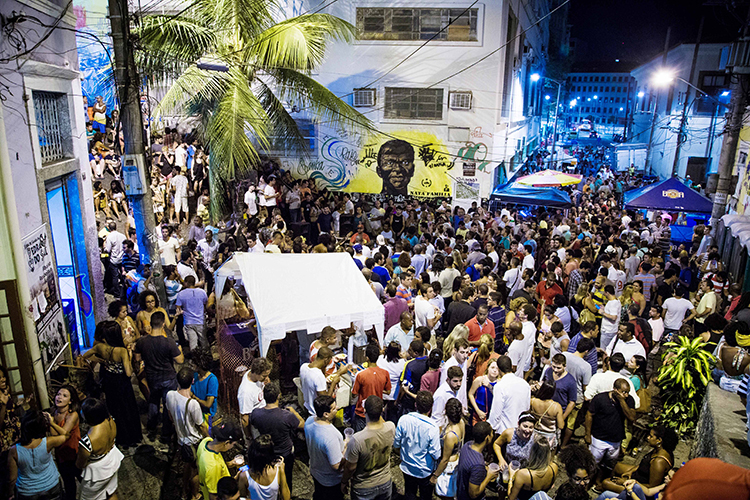
On Mondays and Fridays after sundown, normally sleepy Pedra do Sal awakens to celebrate its samba history as hundreds of locals with a passion for Brazil’s best-known genre of music gather where it all began. On offer is an evening of chilled cervezas, sizzling street food and a pick of the best musicians in the city. Band members traditionally sit around a table as they play to the dancing crowd. The free-of-charge festivities kick off at 9pm, but it’s best to arrive early enough to find a perch on the colossal rock for the best panorama of the festa below.
Beyond the bustle of Copacobana and Ipanema are a group of secluded beaches well worth seeking out. Rent a car for the day (from R$250 including gas), or jump in a taxi (from R$300-R$400 return) and head towards the city’s western wilderness to Rio’s most secret beach, Grumari. On the way, the coastal road from Barra de Tijuca provides beautiful views of the ocean and passes some of the most secret beaches in Rio. There are a variety of options to choose from: the California glamour of Barra, the laid-back surf vibe of Prainha, and finally Grumari’s pocket of paradise.
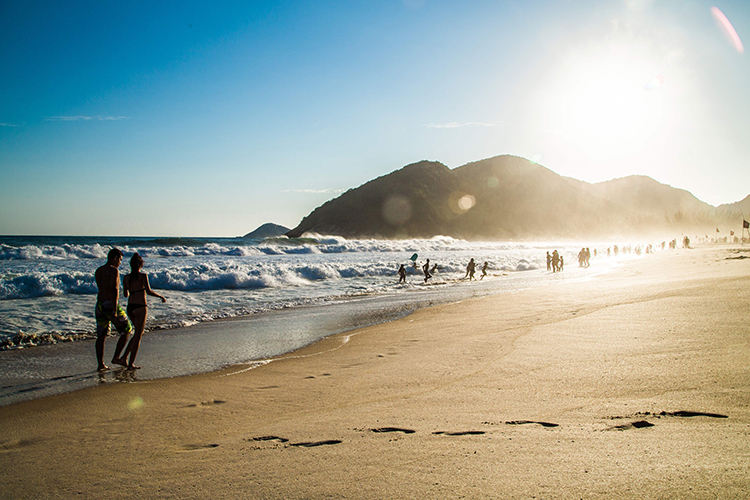
Set alongside a cobbled road, the beach is not towered over by the usual condominiums that dominate most of Rio’s seaside - Grumari’s only neighbors are the lush green mountains. The ideal time to enjoy this little-known stretch of lusciously warm, rolling waves is early on a weekday morning, when the beach is almost deserted apart from a handful of dedicated beach lovers.
With miles of coastline and smooth asphalt, Rio de Janeiro is the prime city for anyone to find their inner ‘radness’. Unbeknownst to many, skateboarding is the second most popular sport in Brazil after football. This becomes obvious with a stroll alongside Ipanema’s cycle path, where longboard skaters stylishly whiz their way towards Copacabana, past the leisurely bicycles, street food carts and muscle-clad runners.
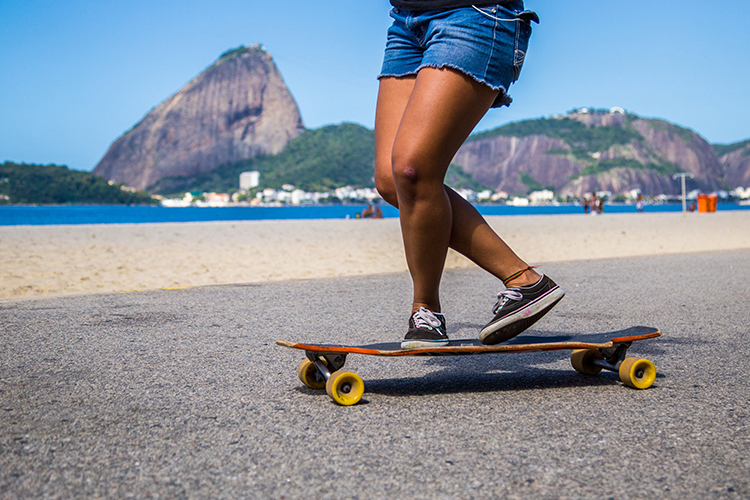
Beyond the obvious Zona Sul beach paths, other first-rate skate spots include the vast circuits around Lagoa and the Maracana Stadium in Tijuca. Another popular skate route is the Parque do Flamengo, which leads from Flamengo beach to Museu de Arte Moderna (MAM) and offers a safe option with plenty of security personnel. The smooth road here has an array of thrilling slopes and curves to keep any shredder happy. Enjoy the laid-back atmosphere shared by groups of young guitar-wielding Cariocas who fire up a barbecue or test their balance on a slackline. For those who don’t yet know how to skateboard but wish to learn, the park is also home ground to Guanabara Boards’ Escola de Skate (skate school), which offers beginner and intermediate longboard lessons in Portuguese and English.
Street art was legalized in Rio de Janeiro in 2014 when the city’s public spaces were officially opened up to Carioca creative types and professional street artists. Whether it is stencils on stairways or adventurous tags on towering buildings, Rio has become one of the most dynamic urban art galleries in the world.
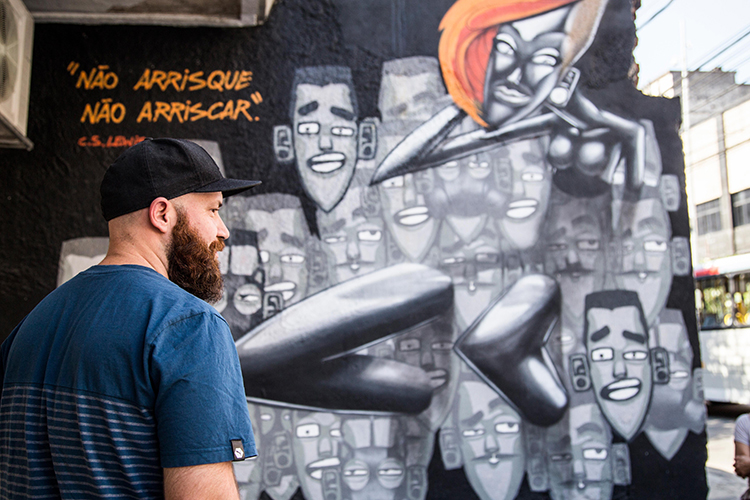
In the alternative culture hub of Lapa, there is a generous spread of gritty graffiti art as well as elegantly composed pieces. Adjacent to the grand Arcos da Lapa is a vibrant wall featuring art by Marcelo Eco, whose characters - always discernible from their trademark triangular chins - can be spotted all over the city. On the very edge of Lapa, at the corner of Rua do Lavradio and Avenue República do Chile, stands one of the most phenomenal pieces in the neighborhood: a gargantuan painting of a woman is wounded by a heart-tipped arrow by artist Pamela Castro, who highlights social issues such as domestic violence in her alluring art.
Further south in Lagoa, the wall outside of the ‘Colégio Aplicação’ spans almost half a block and features an epic mural by world-famed Carioca collective Flesh Beck Crew (FBC). Look out for pieces here by Naïve style artist Pia and the fluorescent-obsessed Toz.
For those who are feeling inspired, Copacabana’s Espaço Rabisco offers urban art lovers the chance to truly immerse themselves in the spray paint spirit. The gallery runs regular workshops and courses to pass their street-art-know-how down to beginners and those already handy with the paint cans.
The words ‘architecture’ and ‘Rio’ in the same sentence may generally conjure up images of sprawling favela shacks or grand colonial building, but Rio de Janeiro is in fact home to a handful of world class modern architecture sites, thanks to legendary local architect, the late Oscar Niemeyer.
Niteroí city is just a thirty-minute ferry ride from the center of Rio de Janeiro and is home to some of Niemeyer's greatest structures. There is also an entire road featuring his works - the aptly-named Caminho Niemeyer welcomes visitors with the curving domes of Teatro Popular and continues for 11km, making it the second largest architectural complex made by the architect.
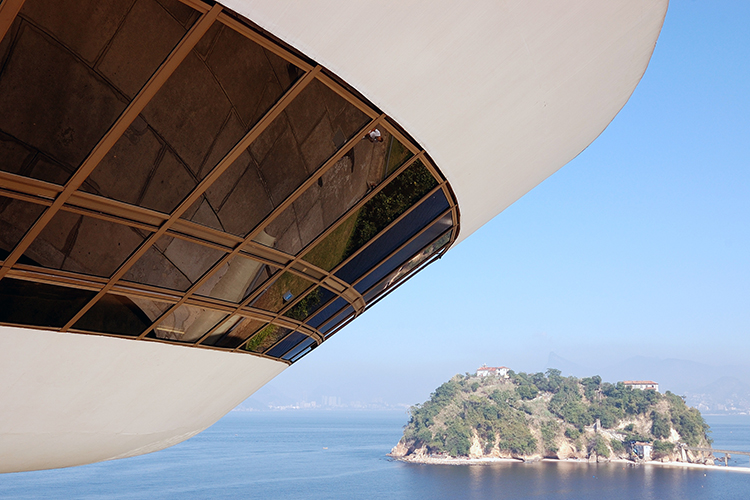
Another building to see is the Museu de Arte Contemporânea, which is just a ten-minute drive from Niteroí in the Boa Viagem neighborhood. The museum's spaceship form is well noted for its daring, futuristic design and wouldn't look out of place on the set of Star Trek.
Back in the center of Rio, Niemeyer’s world-famous Sambadrome can be found on Rua Marquês de Sapucaí. Every year, 90,000 spectators gather in front of the architect’s cleanly formed white arcs for the main event of carnival.
Close-by in downtown, the Palácio Gustavo Capanema (the Ministry of Education and Health building) is an example of a more modest Niemeyer design. It was the first modernist public building in the Americas and the ambitious patio with grand columns and nautical tiles create a balance of architecture and landscape design.
Every Sunday night the normally deserted exterior of MAM is lit up with burst of carnival color as Orquestra Voadora (The Flying Orchestra) march their way for the weekly pre-carnival rehearsal.
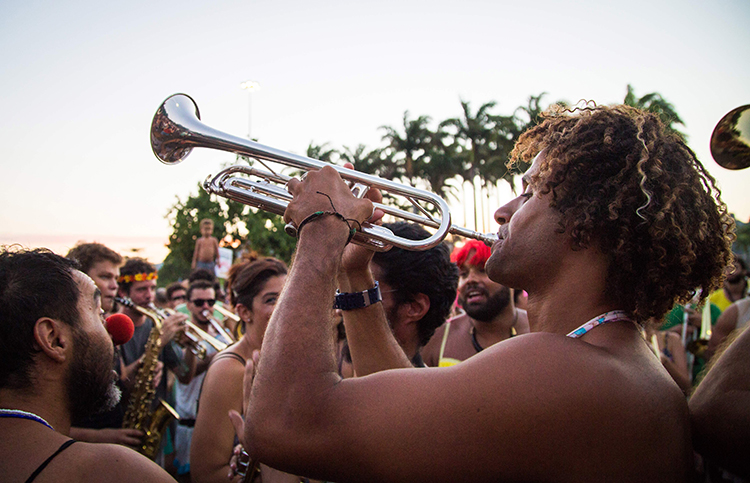
From 7pm onwards, the carnival bloco (block party) - led by a blast of brass instruments and followed by the booming drums and rhythmic chatter of chocalhos (percussion shakers) - moves jubilantly through Atterro do Flamengo until they reach their final destination at the museum.
As the night progresses, the volume ramps up for an evening of epic sounds, creative fancy dress and as much dancing on stilts as humanly possible. Food and drink are available from street vendors and the performers are sure to be having as much fun as the spectators, if not more. A visit to Orquestra Voadora is an unforgettable way to celebrate the end of the week in true Carioca style.